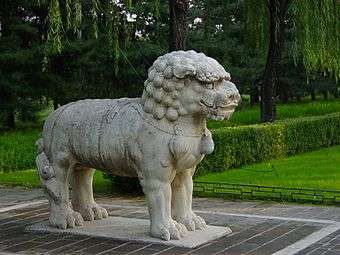Lion-Eating Poet in the Stone Den

The Lion-Eating Poet in the Stone Den (simplified Chinese: 施氏食狮史; traditional Chinese: 施氏食獅史; pinyin: Shī Shì shí shī shǐ; literally: "The Story of Mr. Shi Eating Lions") is a passage composed of 92 characters written in Classical Chinese by Yuen Ren Chao (1892–1982), in which every syllable has the sound shi when read in modern Mandarin Chinese, with only the tones differing. It is an example of a one-syllable article, a form of constrained writing possible in tonal languages such as Mandarin Chinese.
Explanation
Classical Chinese is a written language and is very different from spoken Chinese. Different words that have the same sound when spoken aloud will have different written forms, comparable to air, heir and err in English.
Many characters in the passage had distinct sounds in Middle Chinese. All the various Chinese spoken variants have over time merged and split different sounds. For example, when the same passage is read in Cantonese - even modern Cantonese - there are seven distinct syllables - ci, sai, sap, sat, sek, si, sik - in six distinct tone contours, producing 22 distinct character pronunciations. In Southern Min or Taiwanese Hokkien, there are six distinct syllables - se, si, su, sek, sip, sit – in seven distinct tone contours, producing fifteen character pronunciations.
Therefore, the passage is barely comprehensible when read aloud in modern Mandarin, but far easier to understand when read in other dialects, such as Cantonese.
See also
- Homophonic puns in Mandarin Chinese
- James while John had had had had had had had had had had had a better effect on the teacher
- Buffalo buffalo Buffalo buffalo buffalo buffalo Buffalo buffalo
- Neko no ko koneko, shishi no ko kojishi
Chinese
References
- Forsyth, Mark. (2011). The etymologicon : a circular stroll through the hidden connections of the English language. London: Icon Books. ISBN 978-1-84831-307-1.
External links
- The Three "NOTs" of Hanyu Pinyin has a similar but different text, and it explains that Yuen Ren Chao's intention was not to oppose Chinese Romanization.
- a YouTube video showing the text read aloud in Mandarin